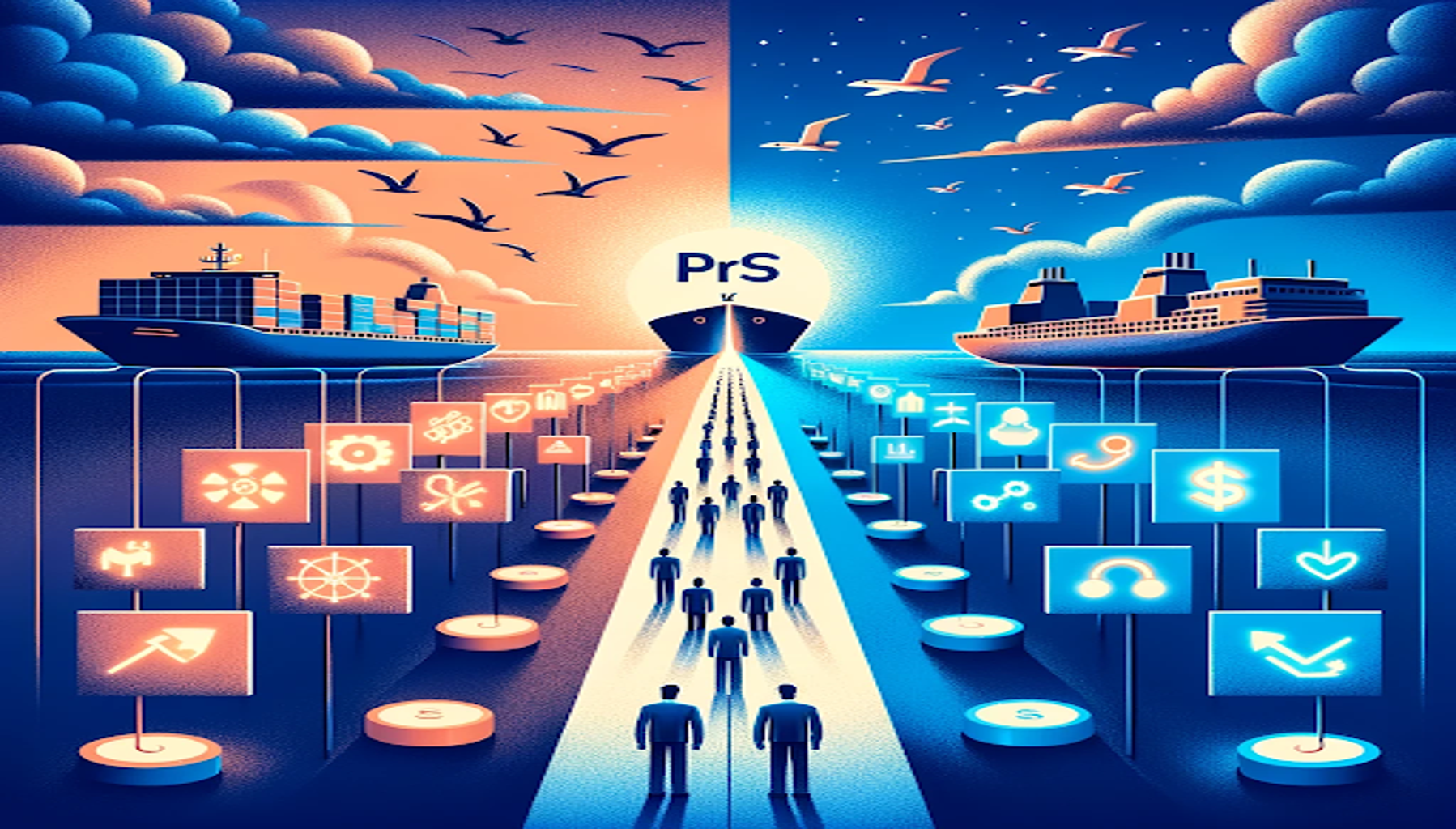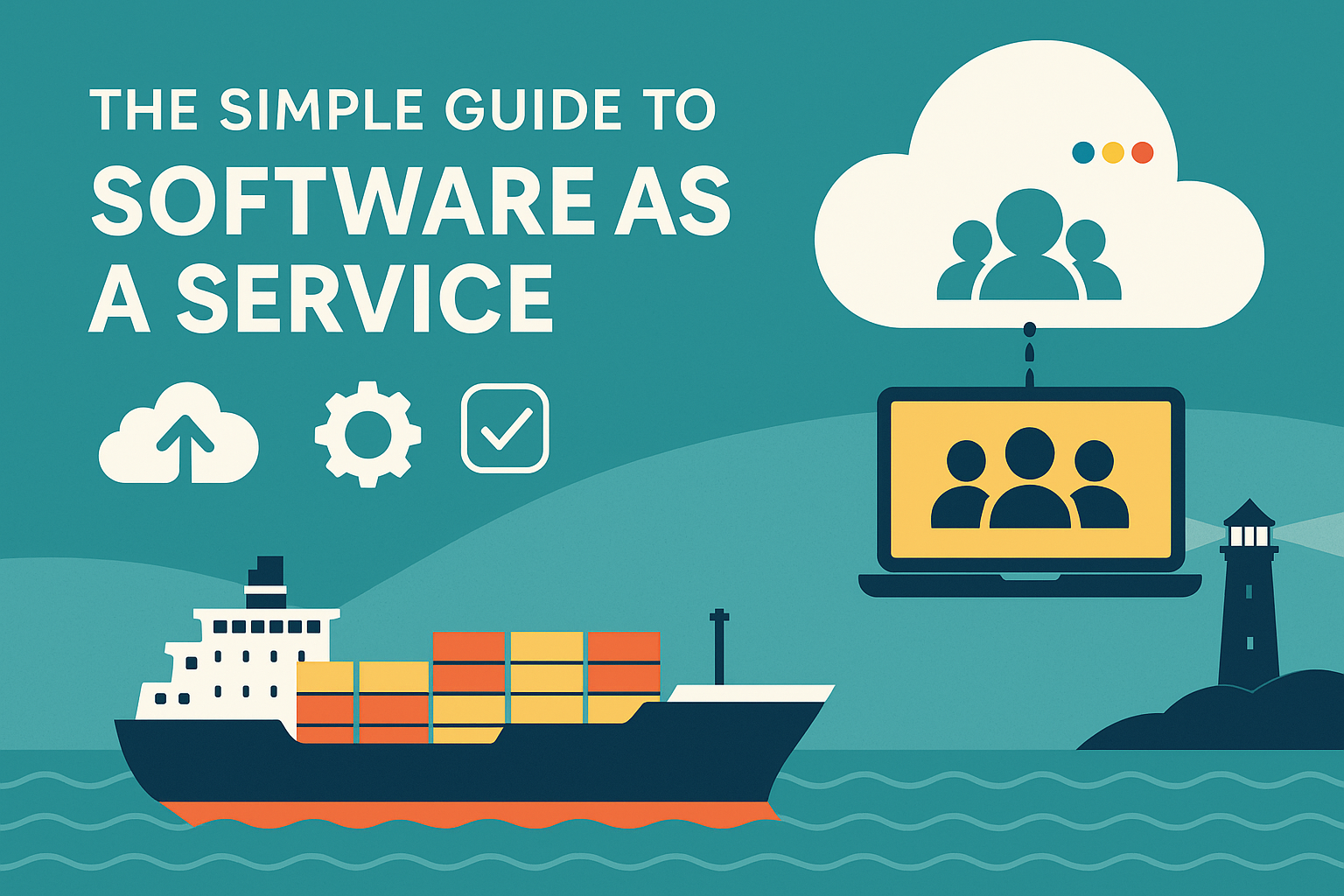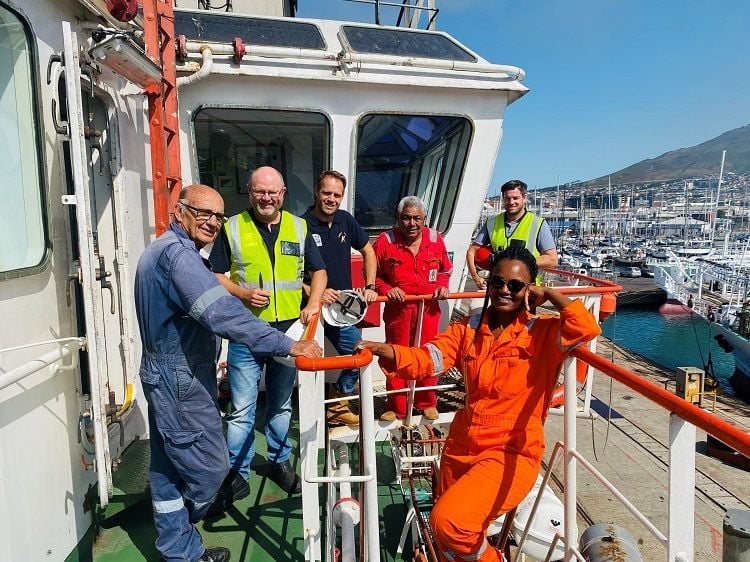Pros & Cons of Software as a Service in Maritime Recruitment

There’s no denying that Software as a Service (SaaS) is a hugely efficient solution for many companies across many industries. And that includes the maritime industry too. But if you’ve been wondering whether implementing SaaS in your small to medium sized shipping company or manning agency, you would be wise to do your research first.
That’s not just because deciding to switch to a Software as a Service model can be a big step (although it doesn’t have to be a disruptive one), it is also because there are different providers of SaaS out there - and, surprise, surprise, they are not all created equally.
The first thing to do when weighing up any kind of business decision is to create a list of pros and cons so that you can see, almost at a glance, if the solution or product you are considering really will work for you.
That’s not rocket science, but it’s surprising how many companies approach implementing a new software product on a trial and error basis, wasting huge amounts of time, effort and money in the process.
With that in mind, we’re going to take a look at some of the advantages - and yes, the disadvantages too - of SaaS. In particular in relation to the maritime industry.
What is Software as a Service in maritime recruitment?
First of all, what actually is Software as a Service? The simple explanation is that it is a way of delivering software - an application or a platform - to the user over the internet.

It is the opposite to using in-house software, which is physically installed on a company’s own servers and computers.
And the good thing about SaaS is that it provides considerable advantages for the majority of businesses, including those in maritime recruitment and crew planning. However that does not mean you should ignore any potential shortcomings.
Read more about what SaaS is in this blog post here: The Simple Guide to Software as a Service.
In the meantime, we’ll summarize the key points below.
What is Software as a Service?
- Your company pays for the SaaS on a subscription basis - this is normally paid monthly or yearly.
- You access the software using an internet connection on your computer, laptop, tablet or phone.
- Software as a Service is hosted in the cloud.
- SaaS offers an alternative solution to traditional on-premise software installations.
What type of office operations use SaaS?
There are any number of office operations that can be streamlined and run via Software as a Service. As a ship manager, crew operator, crew planner, recruitment officer or manning agent you are probably familiar with a number of them.
For example:
- Human Resources Information Systems (HRIS)
- Customer Relationship Management (CRM)
- Accounting and Payroll
- Recruitment, Applicant Tracking and Hiring
- Crew Planning
- Office Communications

So what are the advantages of using Software as a Service to power these back office functions?
The pros of Software as a Service
There are a good number of genuine advantages that SaaS has over traditional business software solutions. For example:
- Anytime, anywhere accessibility: Providing you have an internet connection, you can simply log in to your company’s SaaS of choice no matter where you are. Gone are the days of only being able to access a candidate database or documents on the computer they are stored upon. This is obviously a massive advantage for anyone who travels for work or who works from home.
- No eye-watering start-up costs: Because most SaaS companies charge on a subscription basis, the initial financial outlay whereby you must pay for license fees upfront is eliminated.
- Lower costs moving forward: With traditional software, you need to make sure that your software - and the hardware it is running on - is maintained and kept up-to-date. With SaaS, the provider company manages the IT infrastructure that the software runs on, minimizing maintenance fees for your company.
- Fuss-free updates and upgrades: Again, the provider will deal with any type of update or upgrade needed so that you are always running on the latest version of the software without having to lift a finger yourself. (Or without having to ask your IT guy to lift a finger!) These will usually also be covered by your subscription fee.
- Growth as and when you need it: Many SaaS companies offer a range of subscriptions that offer various features and benefits for a scaling cost structure. This enables you to pick and choose which parts of the software platform you want to use and which you can do without, and budget accordingly. The subscription model normally also allows you to add more users if needed, or scale back if you are downsizing or cutting costs.
- Hit the ground running: Unlike traditional software, which requires a time-consuming deployment onto the hardware, SaaS is already configured and installed in the cloud. That means once you’ve had some training and created a login you’ll be able to get working virtually immediately.
Generally speaking, Software as a Service is great when it comes to helping small to mid-sized businesses, who may not have an in-house IT department or a big budget to spend on technology. It allows them to take advantage of the latest software solutions, as well as access support from a team of experts who know the ins and outs of their product.

But where there’s a pro there can often be a con, and SaaS is no different. Here are some things to consider if you’re thinking about implementing a new software solution in your shipping company or manning agency.
PS, why not follow us on Facebook, LinkedIn and Twitter / X!?
The cons of Software as a Service
These disadvantages are not applicable to all SaaS products or companies but the SaaS model in general can sometimes come with a few drawbacks. For example:
- Internet issues: Anytime, anywhere access has huge advantages for a busy office - but it does mean that an internet connection is a requirement. Luckily in the modern business environment, lost connections are not normally commonplace events, so providing your country or area has a fairly stable internet supply, you will be able to work without issue.
- Security and privacy concerns: Some people fear that placing their data in the cloud will open them up to breaches and theft. However, the cloud is incredibly safe - Google wouldn’t be offering their productivity tools such as Google Documents and Sheets through it if it wasn’t. However, not all companies are Google, so you should make sure that your potential SaaS provider takes your security (and theirs) very seriously. For example, Martide is hosted on Google Cloud Google Security Whitepaper.
- Loss of control: The control over an SaaS is in the hands of the provider. That gives the companies using the software less authority over it than they would do if they were to continue using traditional in-house software. This means that users will all be obligated to use the most recent version of the platform or application. And as we all know, some people are a little resistant to change! However, the pros of this should outweigh the cons when you consider that you’ll be consistently using the best iteration of the software and that any potential security loopholes will be proactively taken care of.
Software as a Service in maritime recruitment and crew planning
There are a number of benefits for shipping companies and manning agents when it comes to adopting the SaaS way of life. Some of them we’ve covered above: affordability, scalability, productivity and accessibility to name just a few.

A Software as a Service solution can also be effective in streamlining processes, such as the maritime recruitment process, applicant tracking, hiring and contract signing.
It can also make the time it takes to find new seafarer candidates and get them onboard quicker and easier - something that will make life easier for you. It will also then help you to retain your seafarers, contract after contract, as they realize that being lined up for jobs by your company is more efficient and less stressful.
And whether your crew are onboard or ashore, a crew planning feature will help make changeover a whole lot easier.
Talk to Martide
If you’d like to find out more about our Software as a Service, which has been designed and built specifically for small to medium sized shipowners, as well as manning agencies, get in touch with us today.
We’d be delighted to schedule a no strings attached demo so we can show you how we help you make maritime recruitment and crew planning easier - as well as more affordable.

Eve Church
Eve is Martide's content writer, publishing regular posts on everything from our maritime recruitment and crew planning software to life at sea. Eve has been writing professionally for more than two decades, crafting everything from SEO-focused blog posts and website landing pages to magazine articles and corporate whitepapers.
UK



